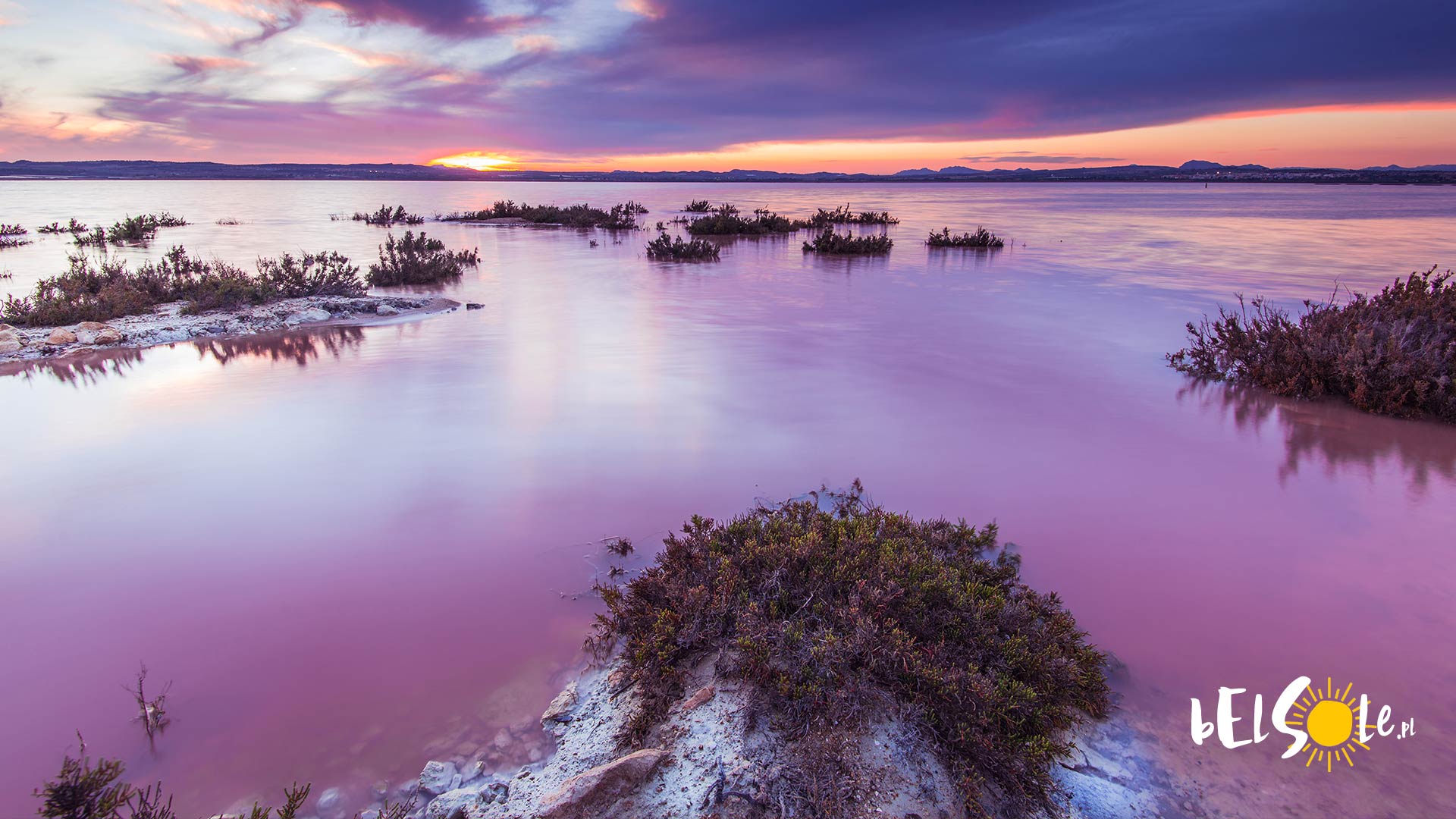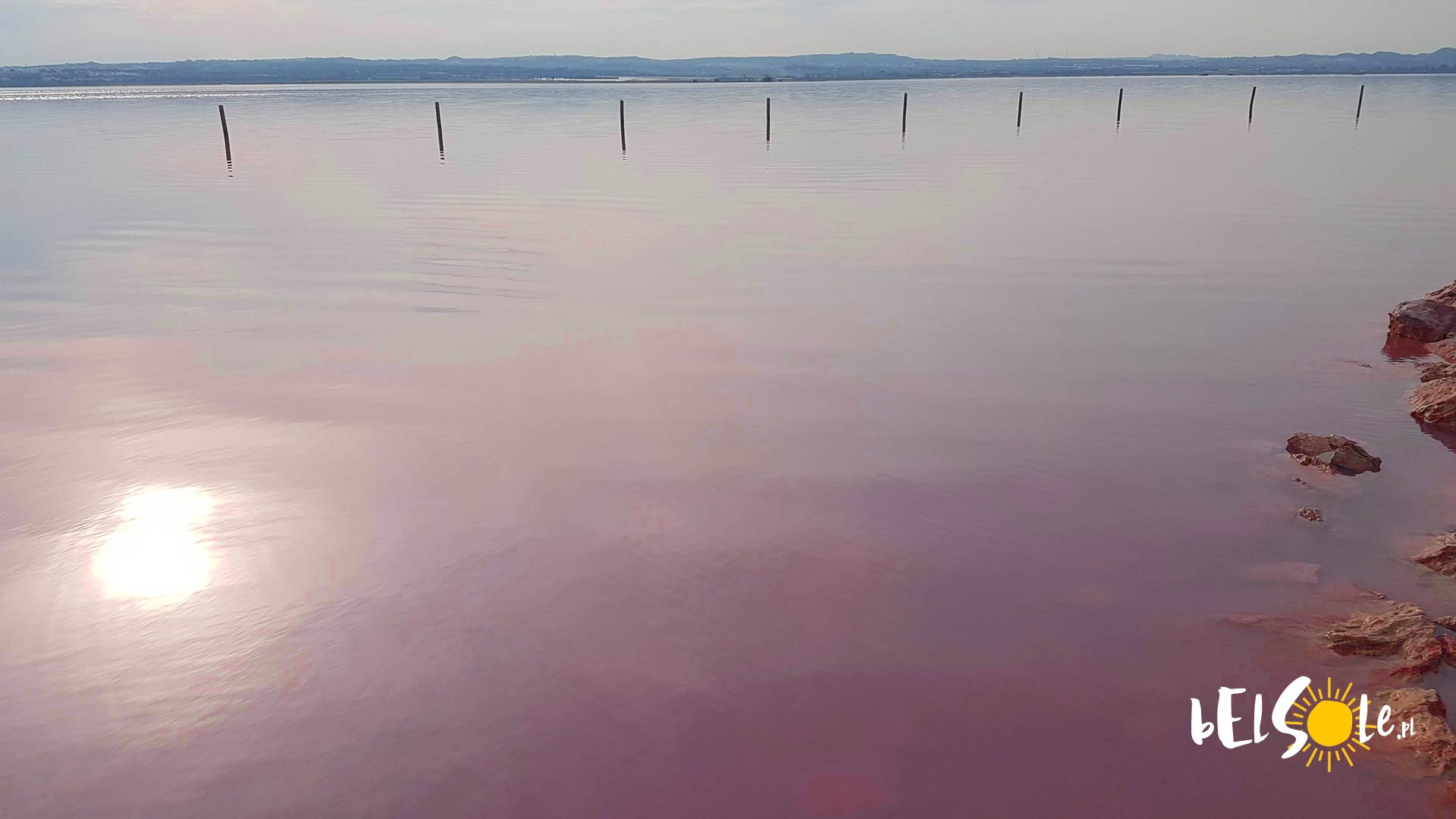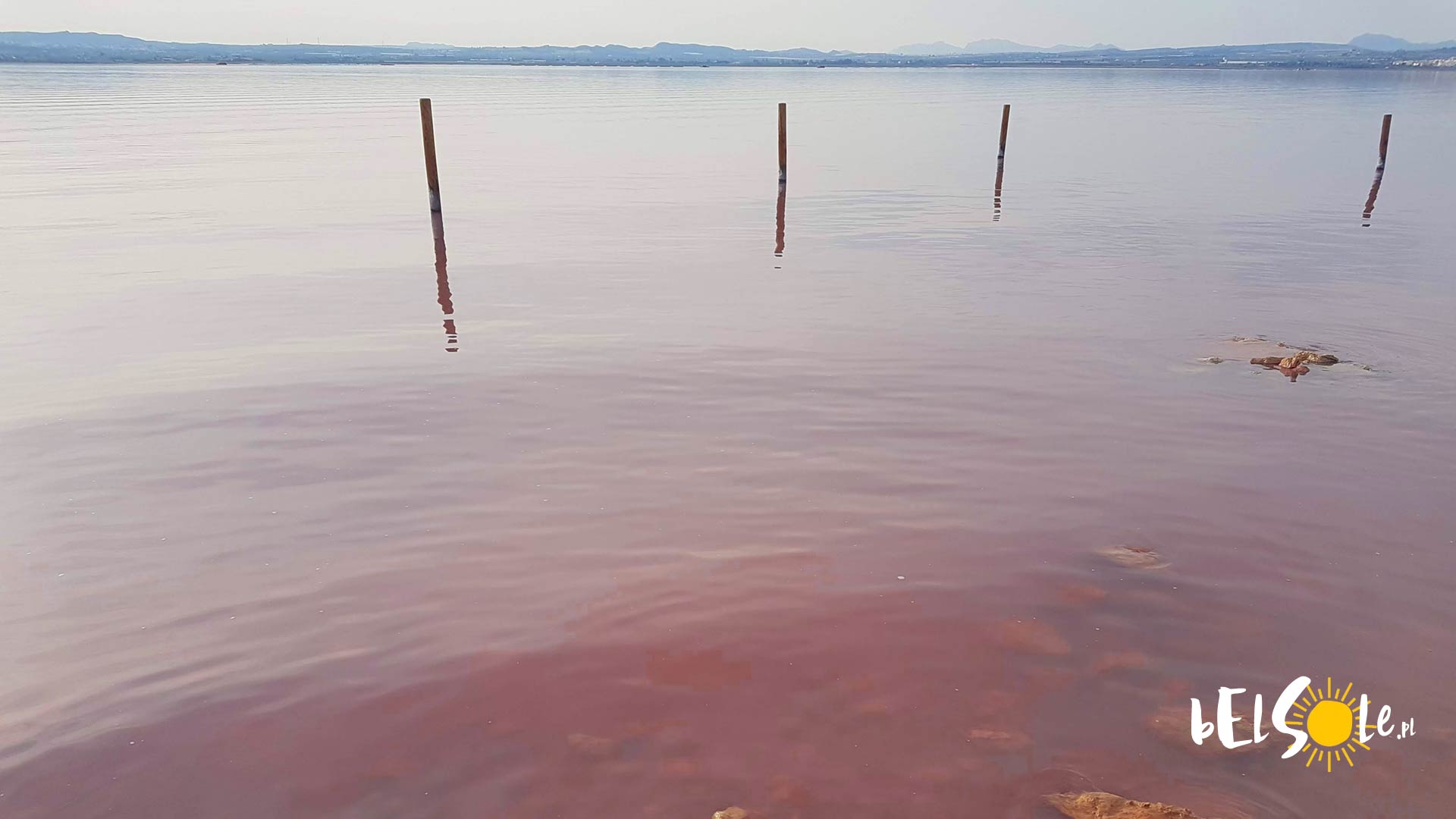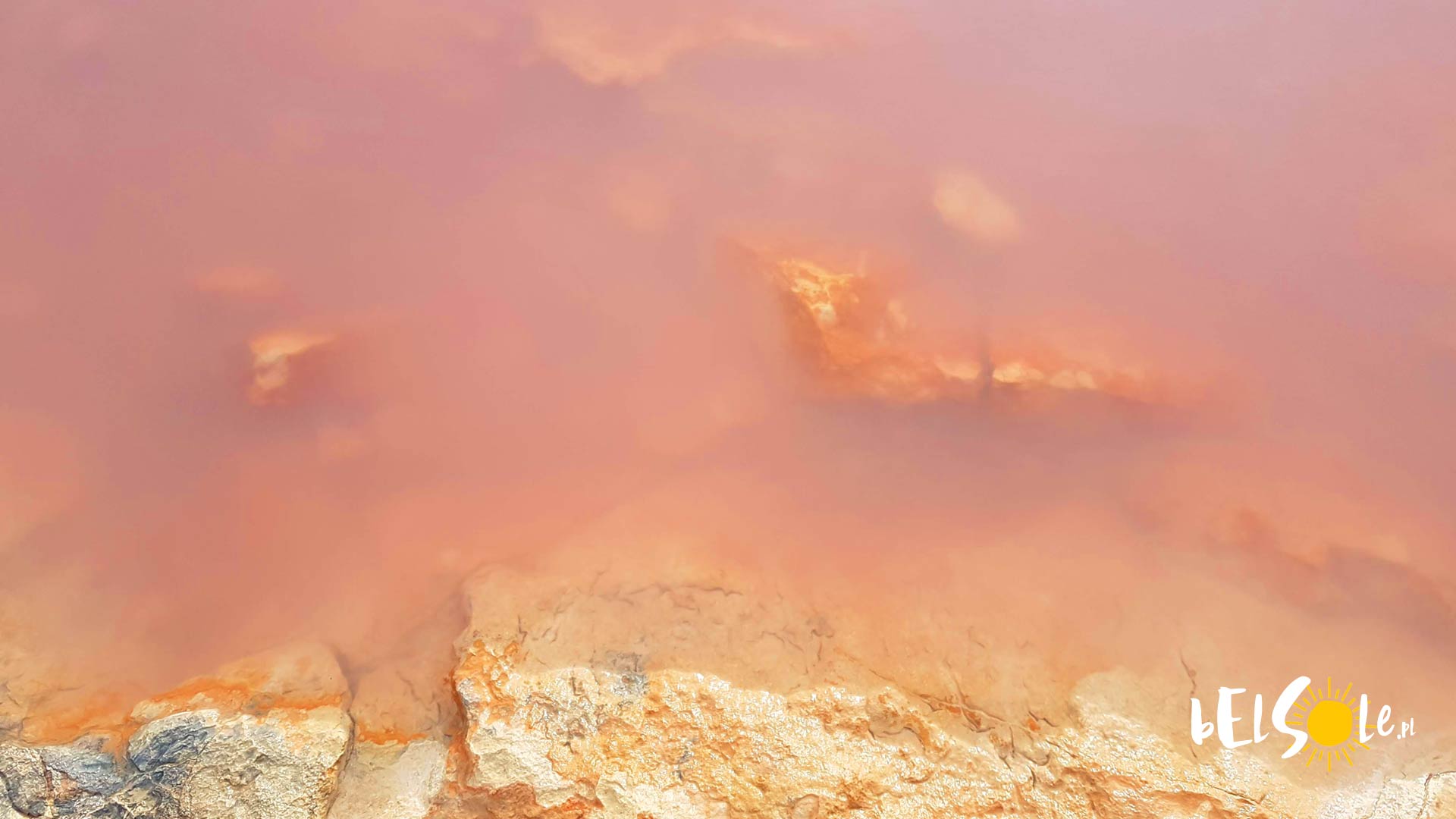There are only a few places so unique and so special in Spain as the Pink Lake of Torrevieja. It’s regarded as one of the biggest attractions around Alicante. It’s also a place beloved by children, as apart from the lake itself, you can also admire the magnificent flamingos. How to get to the pink lake in Spain? Why is it even pink? Is the entry free?
How to get to the Pink Lake?
The two lagoons, located to the east of Valencia, are one of the most admired attractions of the region. They’re situated in the Parque Natural de las Lagunas de La Mata y Torrevieja park, opened on the 27th of January 1989. The protected area takes up 3843 hectares of which the waterbody covers 2100 hectares. The park consists of two water tanks connected through a canal, with a side canal (El Acequion, built in the 13th century) which connects the whole park to the sea. The two tanks are separated with an anticline, upon which El Chaparral stands proudly.
This famous lake is situated roughly 50 km to the south from Alicante, near the region of Murcia. The zone in which the lake is, is the protected Parque Natural de las Lagunas de La Mata y Torrevieja. It’s not just the pink lake that makes up the park, but also the Laguna Salada de la Mata, which is admittedly much less popular among the attractions of the region. It effectively works as a water heater, while the salt is collected from the pink lagoon. Roughly 600 to 700 tons of salt are collected each year.
It’s best to approach the lake from the eastern side, from Calle sol. There’s a viewpoint there. Visiting the pink lake is free for all. You can also get there by bus, from the Torrevieja main station. Afterwards, a 30 minute walk gets you to the lake. The tickets for the Alicante bus stay at around 4,50 – 6 EUR. They leave the station every day from 7:00 till 21:00.
Why are the waters of the lake pink?
Many wonder, why are the pink lakes pink? And it’s not just in Torrevieja, pink lakes exist all over the world. All pink lakes have the very high salt levels, but that does not alter their colour.
There are a few factors, but the most important one is the presence of Dunaliella micro-algae (Dunaliella salina). There aren’t many beings that can survive in such high salt levels, but the Dunaliella salina was able to adapt, thanks to the high levels of β-carotene and glycerol. Thanks to the high levels of β-carotene in these organisms, they’re often used by humans.
The second reason for the pink colour is the presence of archaeas, from the halobacterium group, which have adapted to be able to survive in such salt levels. Fragments of the halobacterium contain the red pigment, so their presence gives out the impression that the lake is in fact red or pink. Unfortunately, the side effect of their presence is the smell.
Flora and fauna of the Pink Lake
The algae and the various bacteria living in the lake are not the only living things we can encounter around the lake. Apart from the colour of the lake, the second biggest source of excitement around the lake comes from the equally pink birds – flamingos. During the nesting season, over two thousand flamingos can be spotted by the lagoon.
Obviously, flamingos are not the only birds which have chosen to make the park their home. During the bird migration season, many unique species can be encountered. From the ones already spotted, we’ve got terns, black-winged stilts, grebes, shelducks and pied avocets. There are also other full-time residents of the nearby area, like Kentish plover or the Eurasian stone-curlew.
Because the salt levels are so high, we shouldn’t expect many types of fish in the lake, but at least there’s an abundance of birds around. They tend to feast on the small crustaceans called Artemia Salina, who made the lake their home. They also share the red-pink colour palette, which only enhances the sight.
What not to do by the lake and when is it the pinkest?
When visiting the Torrevieja lake, apart from the colour and the wondrous flamingos, there’s the characteristic froth and the tiny salt crystals which appear especially often from June till October. Although you may be tempted, entering the water is absolutely forbidden. You have to be extremely careful to not damage any part of this incredible environment.
There’s also the Sea and Salt Museum in Torrevieja, dedicated to the history of the region, where you can see the old boats used to transport the various materials, and get to know the traditions of the region a little bit better. Entering the museum is, just like the lake, free to enter.
If you want to make your holiday photos even more impressive, there are a few good tricks to make sure that the lake looks even more pink. The waters will look more pink if you take the photo during a sunset/sunrise, or after a cloudy day, as the sky will be more pink on average. For the pink lake fans, you may be interested by the Lake Hillier in Australia, Lac Retba in Senegal, Masazir Lake in Azerbaijan, the Lake Dusty Rose in Canada or the beautiful salt pans in Sicily.
The Pink Lake – the most important information and tips for tourists:
- The best period for visiting the Laguna Rosa is during summer or early autumn. That’s when most of the bacteria is active and the angle from which the sun casts its light is the best for taking pics.
- Entering the water is strictly forbidden. There are people on social media whodo break this rule, but please be aware that it’s illegal and just inconsiderate.
- Flamingos are most common during summer and early spring.
- Trekking alongside the lakeside helps with breathing, thanks to the high levels of iodine in the air.
- It’s best to rent a car to go to the lake, or use your own if you have one.
- Visiting the lake is free.










